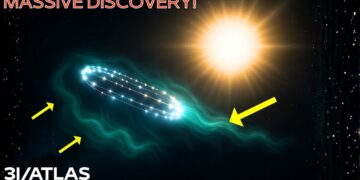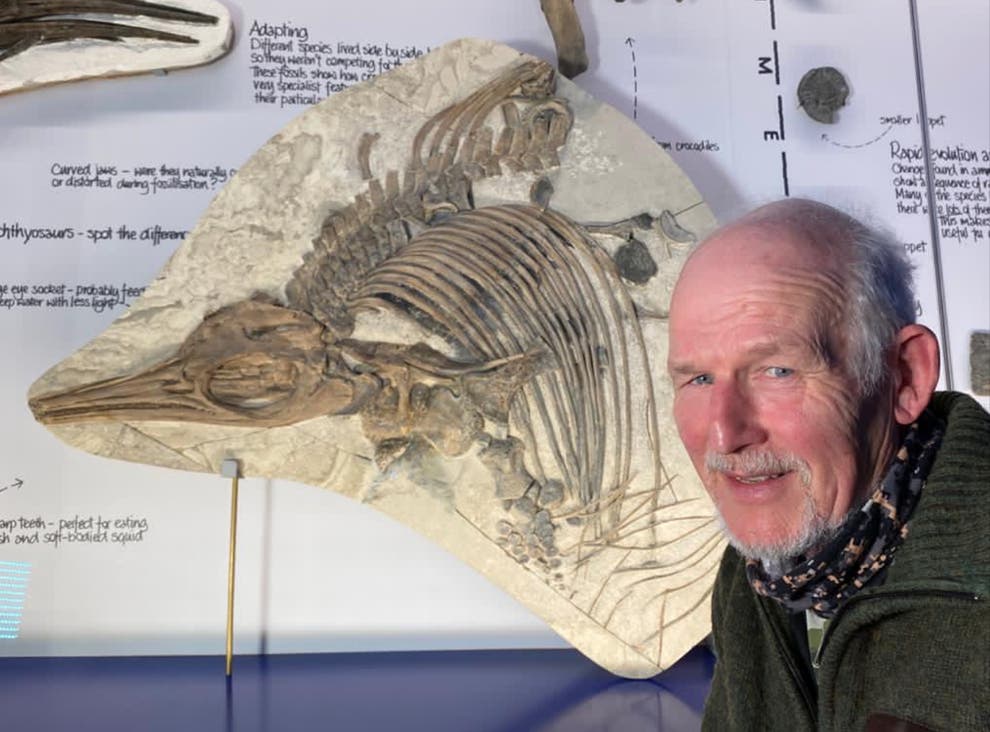Astronomers last week detected a mysterious interstellar object that could be the oldest comet ever observed. This is only the third such visitor, and scientists are in a state of utter shock because it defies every known law of physics. Dubbed 3I/Atlas, this enigmatic traveler is emitting impossible light beams directly toward the Sun, changing colors like a cosmic mood ring, and following a trajectory so precise it appears deliberately planned. Harvard astronomers are quietly proposing it might be artificial technology from an extraterrestrial civilization. The chilling question: if 3I/Atlas can target Mars with surgical accuracy, what happens if Earth is next?
Something is streaking through our solar system right now, leaving astronomers worldwide utterly baffled. They call it 3I/Atlas, and everything about it violates the fundamental laws of physics governing celestial objects. For weeks, researchers tracked what they assumed was just another deep-space rock, expecting it to follow the predictable patterns of billions of years of cosmic visitors. Instead, 3I/Atlas rewrote the rulebook in ways that seem impossible.
It began pulling off feats that had seasoned astronomers questioning their instruments. Its brightness would surge from barely visible to strikingly detectable overnight, then plummet without warning or logical explanation. These aren’t gradual shifts over weeks, as with typical comets—they’re abrupt, dramatic changes that challenge everything experts thought they knew about space objects.
Even more disturbing, 3I/Atlas emits light directly from its surface, not from the usual fuzzy coma of gas and dust enveloping most comets. It’s like finding a snowball with its own internal lighting system. When veteran scientists with decades of experience start whispering that this might not be a natural process, you know something extraordinary is unfolding in our cosmic backyard.
The Rebel of Space Objects
Every solar system visitor follows predictable patterns: heating up near the Sun, developing tails pointing away from solar radiation, with brightness changes tracing smooth mathematical curves. 3I/Atlas glanced at these rules and became the ultimate cosmic rebel, refusing to conform.
Its first act of defiance? Shifting colors—from red to green—as it neared Mars, far too quickly and at the wrong solar distance. Normal comets change color gradually via well-understood chemical processes tied to temperature and radiation. 3I/Atlas ignored the playbook, executing the shift in a timeframe matching no known natural mechanism.
Brightness fluctuations grew wilder in the asteroid belt, with explosive luminosity spikes unrelated to predictable heating or chemical reactions. Most comets brighten along smooth curves, allowing predictions years in advance. 3I/Atlas follows its own internal schedule, indifferent to solar or gravitational influences. Its light curve resembles a chaotic stock market chart, not the elegant patterns of natural phenomena.
The Impossible Light Show
The most mind-blowing feature of 3I/Atlas violates everything known about comets over 4 billion years of solar system history. It projects a focused beam of light toward the Sun—akin to water flowing uphill or fire that freezes. Every recorded comet develops tails pointing away from the Sun, pushed by solar wind and radiation pressure—a basic principle taught in introductory astronomy.
3I/Atlas does the opposite, creating a forward-pointing beam. Hubble Space Telescope images show this structure extending 10 times farther sunward than in any other direction, like a cosmic lighthouse. This isn’t a subtle anomaly; it’s a blatant violation of physics.
Desperate conventional explanations suggest massive, durable fragments breaking from the sunward side, somehow resisting solar wind to float ahead while reflecting light unusually. This would require 3I/Atlas to be far more solid than typical “dirty snowballs” of ice and dust. The beam’s intensity and focus suggest either unknown physics or artificial construction. Natural processes produce diffuse light; this is a concentrated, stable beam implying active control.
Chemistry Gone Wrong
Spectroscopic analysis reveals a composition that defies cosmic chemistry: 87% carbon dioxide, 9% carbon monoxide, just 4% water. It’s like a fish made of feathers and concrete. Comets are “dirty snowballs” of water ice and dust; this is an iceberg of sand and metal, fitting no known category.
James Webb Space Telescope data shows exotic traces, including significant nickel without iron—cosmic twins that always appear together in nature. Isolated nickel suggests formation in an alien environment or artificial manufacture. High carbon monoxide alongside CO₂ creates a signature unmatched by any stellar process.
The Harvard Connection
When Harvard’s Avi Loeb—known for bold questions—suggests 3I/Atlas might be artificial, the scientific world listens. Loeb proposes it as a technological mothership deploying reconnaissance probes during its solar system pass. Brightness surges could be controlled breakups releasing craft toward Mars, timed with suspicious precision.
This theory explains all anomalies: the forward beam as propulsion or communication; bizarre chemistry as engineered materials; related object C/2025 R2 Swan as a deployed probe.
Navigation Like a Pro
3I/Atlas follows a trajectory of staggering precision, nearly parallel to the planetary orbital plane—a feat statistically improbable for a random interloper. It makes “strategic decisions”: close enough to Mars for observation or sampling, distant enough from Earth to avoid collision or scrutiny.
At perihelion, it will hide behind the Sun from Earth’s view, blocking observation during peak solar energy access.
Mars Gets the Best View
October 3, 2025, marks a historic moment: 3I/Atlas’s closest Mars approach. NASA’s Mars Reconnaissance Orbiter, with its HiRISE camera (resolving ~30 cm/pixel), will capture the highest-resolution images ever of an interstellar object. These could reveal whether it generates internal light or reflects sunlight extraordinarily—and settle the natural vs. artificial debate.
This is humanity’s first chance to photograph an interstellar visitor from another planet. Multiple spacecraft will contribute data, but time is critical: as an unbound interloper, 3I/Atlas will soon vanish into deep space forever.
The Mars flyby data may prove we’ve detected alien technology—or natural phenomena that shatter our understanding of physics and chemistry.























